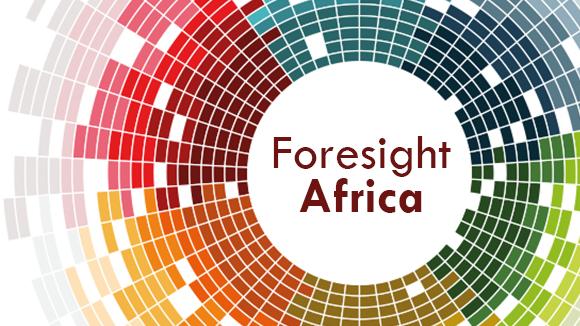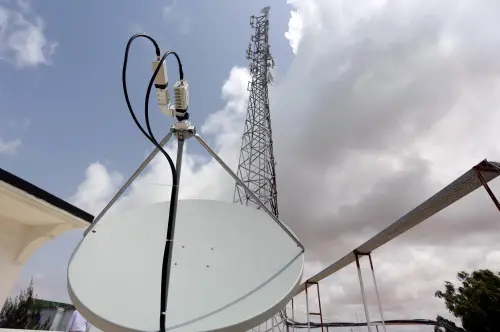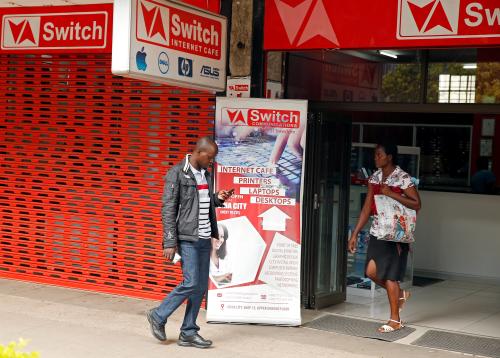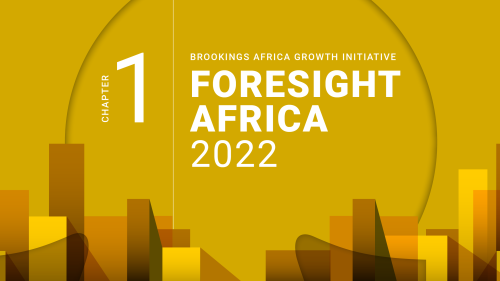Below is a viewpoint from the Foresight Africa 2022 report, which explores top priorities for the region in the coming year. Read the full chapter on technological innovations.
 Imagine an Africa without boundaries—an African continent where commerce takes place freely between states, and goods and services are exchanged for value without the constraint of complex and often expensive customs procedures and tariffs.
Imagine an Africa without boundaries—an African continent where commerce takes place freely between states, and goods and services are exchanged for value without the constraint of complex and often expensive customs procedures and tariffs.
This burgeoning, free-flowing mosaic of information, goods, and capital would certainly reshape the economies of African countries, encouraging African governments to rethink their policies, minimize trade costs, empower their workers, and take advantage of new opportunities.
I like to think that this Africa is the one envisioned by the African Union in the African Continental Free Trade Agreement (AfCFTA). A pact, which, if fully implemented, would connect approximately 1.3 billion people across 55 countries with a combined GDP of $3.4 trillion.
In 2020, the World Bank found that the enforcement of AfCFTA has the potential of increasing African exports by $560 billion while boosting Africa’s income by $450 billion by 2035. Notably, it also reads, “out of the $450 billion, $292 billion would come from stronger trade facilitation—measures to reduce red tape, simplify customs procedures and make it easier for African businesses to integrate into global supply chains.”
It is said that, while money is the lifeblood of an economy, a well-implemented payment infrastructure is its circulatory system.
One such measure includes the development of a centralized payment and settlement infrastructure to support trade in this new arrangement—now led by Africa Export-Import Bank (Afreximbank) in partnership with the AfCFTA Secretariat and dubbed the Pan-African Payment and Settlement System (PAPSS). With PAPSS, payment facilitators—whether banks or emerging fintech ventures across Africa—will be able to plug in to make secure and instant payments on behalf of their customers.
Fully realized, what could the implementation of AfCFTA and PAPSS look like?
It is said that, while money is the lifeblood of an economy, a well-implemented payment infrastructure is its circulatory system. The implementation of PAPSS is, therefore, critical to facilitating the smooth operation of a continent-wide marketplace and offers benefits to important stakeholders in the African private sector:
For African businesses: Businesses across Africa will enjoy the benefit of receiving and making payments instantly, which will increase trust and trade volumes, and free up time previously lost while waiting to confirm payments. For instance, if a fashion house in Accra were to purchase kikoy fabric from a small fabric manufacturer in Kenya, it would be able to pay for the fabric instantly and in its own local currency. The fabric manufacturer in Kenya would receive payment instantly into its bank account, in its local currency, thereby skirting currently common delays in customs and tax procedures—freeing up time to respond quickly to the order from Accra.
For African commercial banks: For banks involved in payment clearing and settlement, the successful implementation of PAPSS means a decrease in liquidity requirements for settlements as well as their own payments. Consequently, there will be fewer constraints on the funds they hold for settlements, freeing up more money for other value-added services and initiatives. More importantly, these banks would have a reduced need to source for scarce hard currencies to support transactions between two African markets.
For policymakers: Streamlining value exchange procedures aside, the successful implementation of PAPSS could help trace informal small-scale cross-border trade—an important aspect of African economies that is rarely fully captured and reported in official trade statistics. As a result, these common transactions are often not taken into consideration by policymakers and foreign investors when making decisions, which leads to financial exclusion and underestimation of the export potential of African countries.
Last-mile users: Some of the world’s fastest-growing and groundbreaking fintechs can be found across Africa, especially in Egypt, Nigeria, Kenya, South Africa, and beyond. These fintechs provide last-mile access to thousands of people and small businesses that ordinarily cannot be reached by formal banking structures. Just imagine the far-reaching economic impact of PAPSS when the clients of fintechs and those of the commercial banks across Africa are connected to a common and instant payment rail.
If the devastating international trade disruptions brought about by the COVID-19 pandemic have taught us anything as a continent, it should be that investing in regional trade is vital for helping African countries absorb future economic shocks as well as for enhancing long-term sustainable economic growth and development.
Notwithstanding, if the devastating international trade disruptions brought about by the COVID-19 pandemic have taught us anything as a continent, it should be that investing in regional trade is vital for helping African countries absorb future economic shocks as well as for enhancing long-term sustainable economic growth and development.
While ultimately, the onus falls on African governments to fully implement the AfCFTA, PAPSS is positioned to help spur and fast track this implementation. This gives me hope that Africa’s future, even in a post-COVID-19 world, is headed in a positive direction—a path that is paved with innovation, financial inclusion, prosperity, and economic policy reform.
The Brookings Institution is committed to quality, independence, and impact.
We are supported by a diverse array of funders. In line with our values and policies, each Brookings publication represents the sole views of its author(s).








Commentary
Boosting the AfCFTA: The role of the Pan-African Payment and Settlement System
February 11, 2022